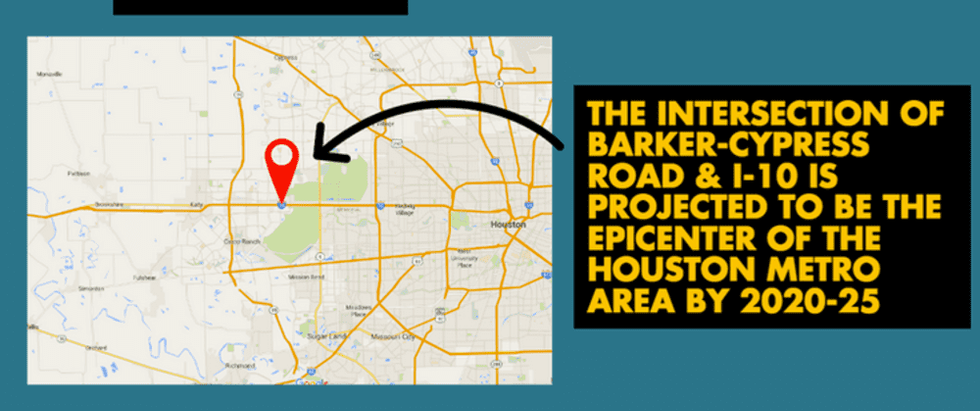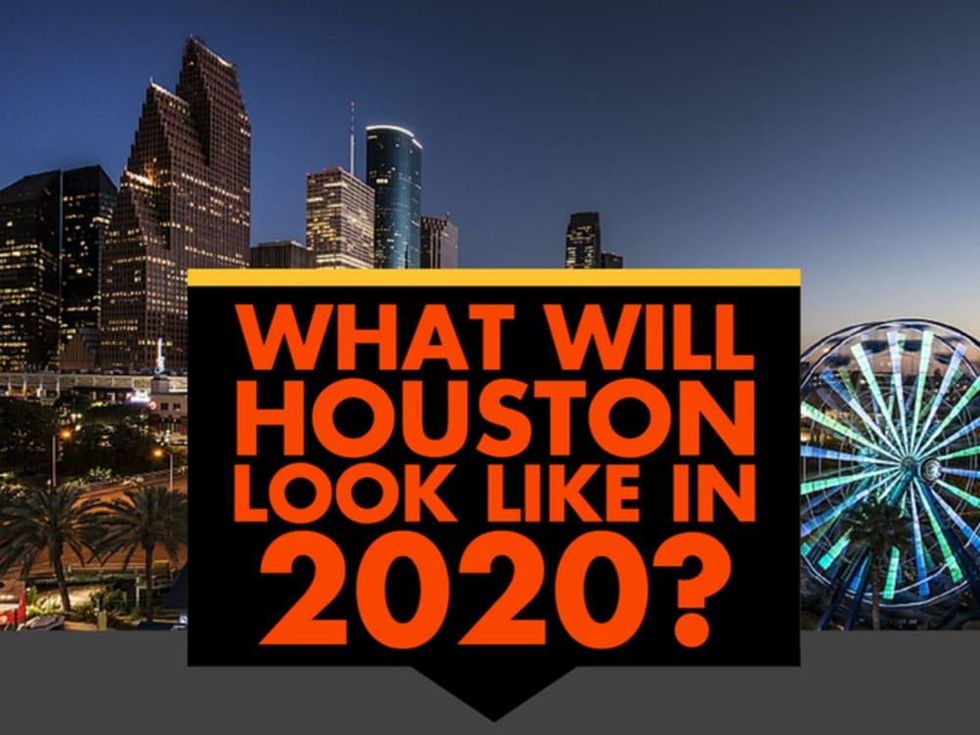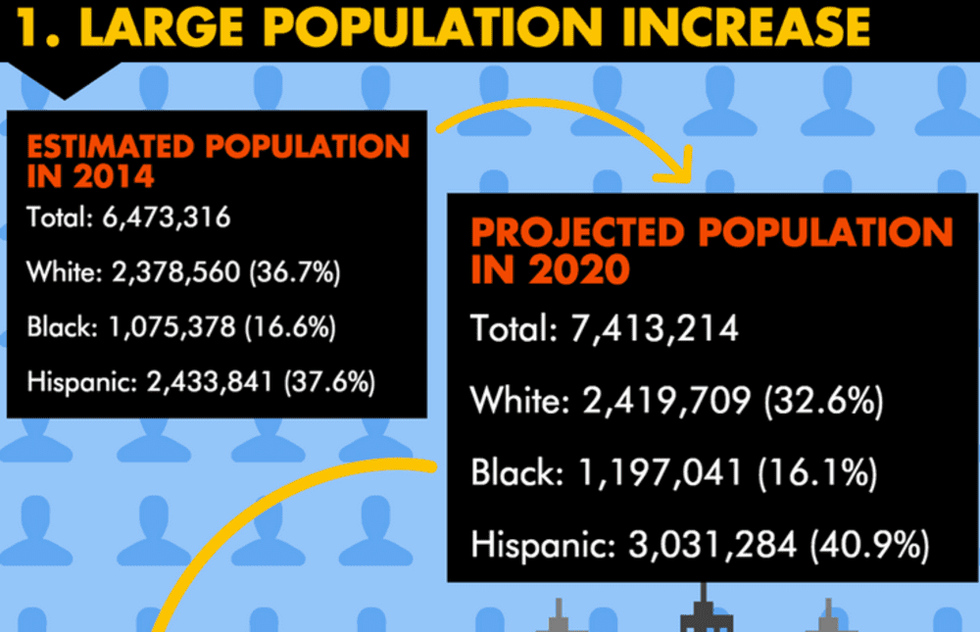Houston's Future
What Houston will look like in 2020: Bigger, more Hispanic and surprising new epicenter
After being recently named as America's Fastest-Growing City by Forbes, to say that Houston is rapidly changing is a vast understatement. If you've ever wondered what the Bayou City will be like in 2020, a new set of statistics is here to shed some light.
Data compiled by Lawnstarter indicates that Houston will continue to grow rapidly, with a sharp increase in Hispanics, who will make up the largest portion of residents, and fewer Anglos.
In 2014, the Houston metropolitan area had an estimated population of 6,473,316, consisting of approximately 36.7 percent white residents, 37.6 percent Hispanic residents and 16.6 percent black residents.
In 2020, the city is projected to have a population of 7,413,214 — a 14.5 percent increase in population — consisting of approximately 32.6 percent white residents, 40.9 percent Hispanic residents and 16.1 percent black residents.
If the projected population increase is correct, Houston could surpass Chicago to become the third largest city in the nation.
Booming economy
Another drastic change is expected in the size of the city's economy. In 2013, the local economy was estimated around $396.6 billion and is expected to grow by $125.9 billion to a grand total of $522.5 billion by 2020.
Houston's job market is projected to grow from an estimated 3,069,034 jobs in 2015 to 3,309,842 jobs in 2020, adding a total of 240,808 jobs to the local economy in five years. The city's job growth rate is also expected to increase from 2.2 percent in 2015 to 2.3 percent in 2020.
(By comparison, the Dallas economy is expected to grow from $384.8 billion in 2014 to $505.4 billion in 2020.)
Transportation needs
The city is expected to see significant growth terms of its transportation needs, going from 26,545,231 flight boardings in 2014 to a projected 29,907,397 boardings in 2020 — a 12.7 percent increase. The intersection of Barker-Cypress Road and Interstate 10 is projected to be the epicenter of the Houston metro area by 2020 to 2025.
Homes over $250,000
In regards to housing market growth, Houston is expected to add at least 130,000 homes by 2020 at a rate that is 10 percent higher than in 2015. Homes added by 2020 will be almost exclusively made up of ones valued at more than $250,000. Apartment rents will also increase by an annual average of 3.8 percent from 2015 to 2020.
Need for more water
According to projections, another major change is expected in the amount of water used in the city. In 2013, Houston used 117.7 billion gallons of water, and the city is expected to see a 26 percent increase in usage by 2020 with 148.4 billion gallons used. Moreover, 70 percent of all water used in West Houston must originate from surface water sources by 2020.





